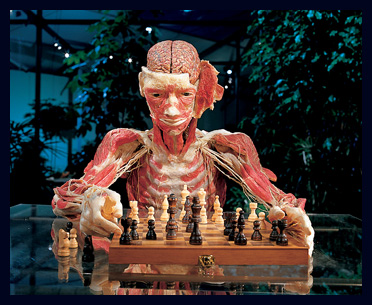

Willard High School Science
Department
"Developing tomorrow's leaders
by pursuing excellence today"
Anatomy and Physiology

Instructor: Coach Lindsay
Phone: 417-742-3524 ext. 3158
Email: glindsay@willard.k12.mo.us
Conference:
4th Hour
Text:
Principals of Anatomy and Physiology 12th
Edition by Tortora and Derrickson Copyright 2009
Course:
Anatomy and Physiology is designed to give students an introduction to basic
human anatomy as well as physiology. This course will help prepare those
college bound students with an interest in the biomedical sciences. For the
student that is not college bound this course provides a background of their own
physiology that can be used throughout their lives. There will be a number of
investigative labs as well as field trips to several medical facilities and
local laboratories. We will also have guest speakers representing field of
interest throughout the year.
Course Objectives:
After the successful completion of this course students will be able to:
1. Understand the organizational arrangement of the human body.
2. Identify the principles of support and movement.
3. Recognize the various control systems of the human body.
4. Understand the functions of the systems associated with the maintenance of
the human body.
5. Recognize structure and function of the reproductive system.
Content Outline:
1. Organization and the Integumentary System
2. Skeletal System
3. Muscular System
4. Central and Peripheral Nervous System
5. Special Senses
6. Cardiovascular and Lymphatic System
7. Respiratory System
8. Digestive System
9. Urogenital Structure and Function
Grading:
Throughout this course you will be expected to keep a notebook with your
daily notes as well as lab activities. This course is designed to be as “hands
on” as possible. You will be expected to keep your lab activities and notes
separate in your notebook. This notebook will be worth 10% of your total grade.
The labs and activities will be vital to your grade. It is extremely important that you are here on days of scheduled labs. All students will be required to complete pre and post lab reports. These reports will be kept with the student’s portfolio and will be graded with the lab component. Your group’s grade on a lab will be designated for each individual. It is therefore wise to keep your group on task. You will be asked to give an oral presentation, either individually or as a group. Your labs and activities will account for 27% of your total grade.
Your exams may be multiple choice, matching, and identification, fill in the blank, or essay. Your test and quiz scores will account for 55% of your total grade. Your final exam will count as 10% of this total for the semester.
Your personal level of involvement as well as behavior in my class carries 3% of your total grade. This portion of your grade is the equivalent of a B+ becoming an A-.
Late work:
My policy on late work is as follows: if you have an excused absence you have 2
days to turn in your late work. If you are out for an extended period of time
with an excused absence see me and arrangements will be made. For labs that are
missed with an excused absence you will receive no points and the assignment
will neither count against your grade, nor will you receive points toward your
grade. There are to many variables to manipulate to arrange a lab for one
individual. If you are absent with an unexcused absence NO work will be
accepted. It is the responsibility of the student to check on work that may
have been missed due to absence. If the student does not check with the
instructor on return from their absence then the grade received will be a zero.
If the student is absent they may email for work or check my webpage.
Tardies:
Students are expected to be in class and in their seats when the tardy bell
sounds. Any student that is not in the classroom and seated when the bell rings
will be subject to discipline according to the student handbook.
Grading scale:
90%-100%=A
80%-89% = B
70%-79% = C
60%-69% = D
-59% = F
Competencies addressed:
1. Students will identify the major levels of organization in the human body
from the simplest to the most complex.
2. Students will identify the
organ systems of the human body and the major components of each system.
3. Students will recognize similarities in fetal pig organ systems to human
organ systems.
4. Students will apply the use of anatomical terms to describe body sections,
body regions, and relative position.
Moodle: http://ecampus.willardr2.net/
ACT Prep:
Materials: Printable Class Syllabus